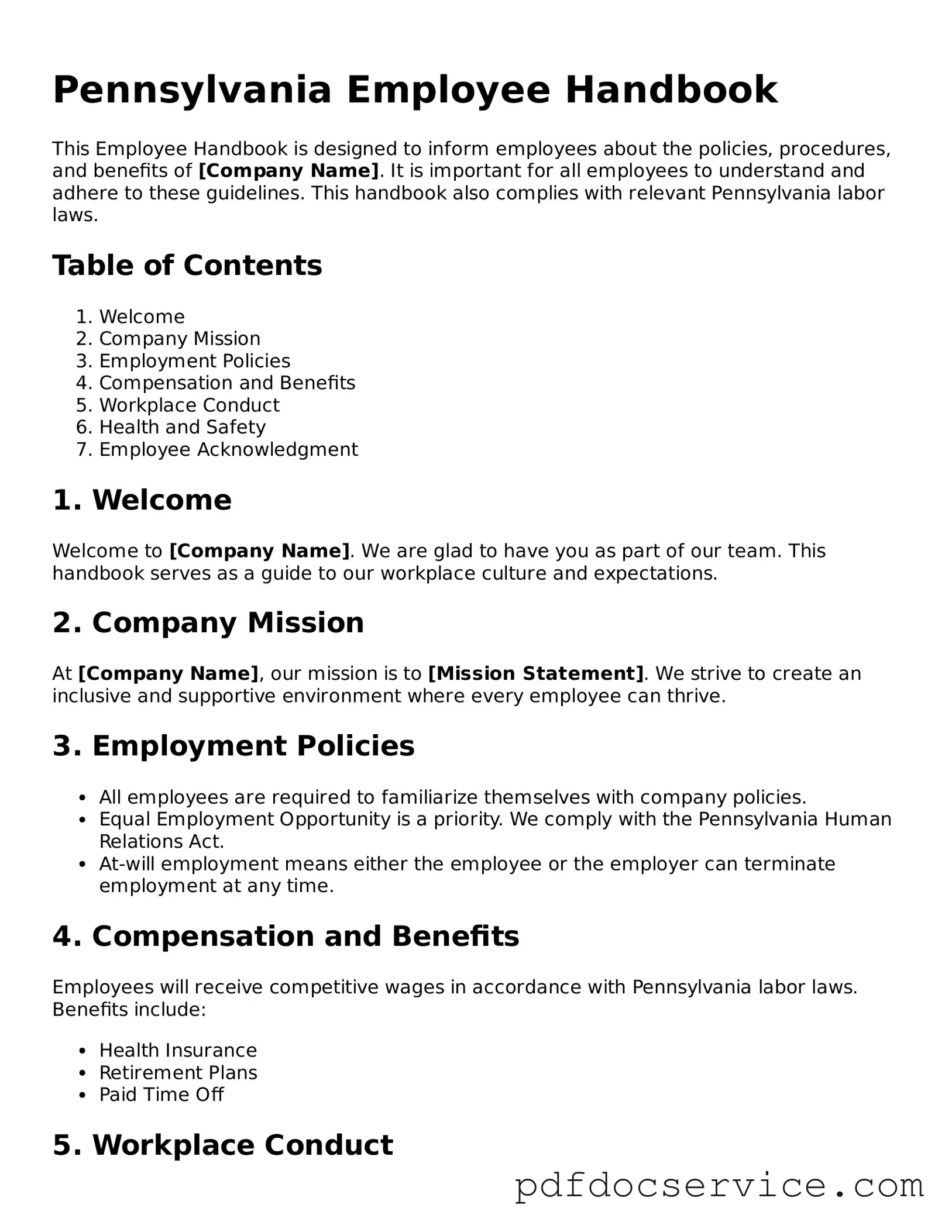Printable Employee Handbook Template for Pennsylvania
The Pennsylvania Employee Handbook form serves as a vital document that outlines the policies, procedures, and expectations for employees within an organization. This handbook not only communicates important information but also helps to foster a positive work environment. By providing clear guidelines, it promotes understanding and compliance among all staff members.
Open Employee Handbook Editor
